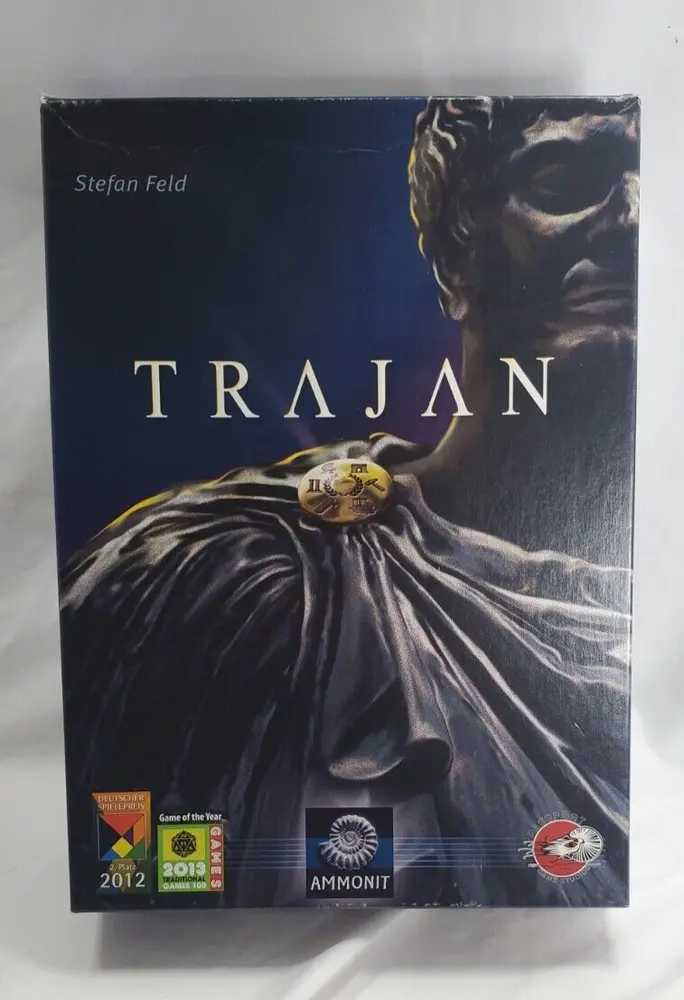Trajan (1991)
Trajan
“Trajan” is a board game designed by Stefan Feld and introduced in 2011 by German publisher Ammonit Spieleverlag.
Why is Trajan Popular?
“Trajan” is a popular and significant board game for several reasons:
– Unique Action Selection: The game’s mancala-style mechanism adds an interesting twist to player decision-making, as players must strategically choose their actions based on the available sections of the mancala.
– Historical Context: The game takes place in ancient Rome, providing players with an immersive and educational experience while enjoying the strategic gameplay.
– Replayability: “Trajan” offers a variety of gameplay options and scenarios, making it an enjoyable and challenging game for players of all skill levels.
We are supported by our audience. When you purchase through links on our site, we may earn an affiliate commission, at no extra cost for you. Learn more.

